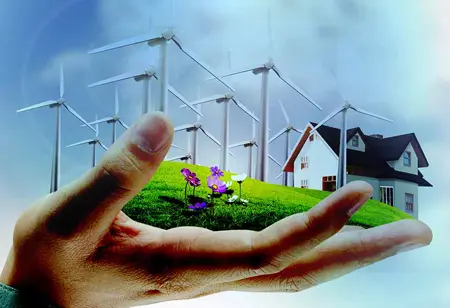Thank you for Subscribing to Energy Business Review Weekly Brief
Balancing Hydrogen Potential and Climate Impacts: Ensuring Effective Production and Management
Hydrogen is hailed as a promising solution for reducing greenhouse gas emissions and mitigating the effects of climate change.

By
Energy Business Review | Wednesday, June 14, 2023
Stay ahead of the industry with exclusive feature stories on the top companies, expert insights and the latest news delivered straight to your inbox. Subscribe today.
Balancing hydrogen production methods and use cases, particularly focusing on areas with limited clean alternatives, can help achieve significant emission reductions.
FREMONT, CA: Hydrogen is hailed as a promising solution for reducing greenhouse gas emissions and mitigating the effects of climate change. With substantial investments from policymakers and industry, hydrogen energy technologies are gaining momentum. However, it is crucial to understand that hydrogen, as a leak-prone gas, possesses potent warming effects that are often overlooked. The success of the hydrogen energy revolution in benefiting the climate depends on how it is produced, managed, and utilized. This article explores the need for measures to prevent hydrogen leakage and considers the environmental impacts of its production and use.
Scientific research has revealed that hydrogen triggers indirect warming effects in the atmosphere. Recent studies by organizations like EDF indicate that the warming power of hydrogen is significantly greater than previously recognized. Unfortunately, standard scientific accounting methods in treaties and reporting requirements underestimate hydrogen's near-term warming effects. While hydrogen dissipates from the atmosphere relatively quickly, its climate impacts are typically calculated over a 100-year timeframe, masking the damage caused by escaped hydrogen in the short term. When measured over a 20-year timeframe, which better reflects its near-term warming impact, hydrogen is found to have six times more warming power than generally acknowledged.
Given the heightened warming potential of hydrogen, preventing its escape into the atmosphere becomes imperative. However, due to its small molecular size, containing hydrogen poses significant challenges. Traditional hydrogen production methods are energy-intensive and contribute to climate pollution. Yet, there are more environmentally friendly alternatives. Blue hydrogen is produced by capturing carbon emissions from natural gas, while green hydrogen is produced by using renewable energy to extract oxygen molecules from water. Although both forms are not yet commercially available and are more expensive than fossil fuels, ongoing investments in the sector will likely improve their viability.
Recent research has examined the climate impact of blue and green hydrogen under different leakage scenarios. With low leak rates, blue hydrogen (produced from natural gas with carbon capture and minimal upstream methane emissions) and green hydrogen (produced using zero-emission electricity) demonstrate significant reductions in climate impact compared to fossil fuels. However, blue hydrogen could increase the 20-year warming impact in high-leakage scenarios. In contrast, green hydrogen still outperforms fossil fuels over 20 years but falls short of the climate-neutral claims often made.
It is essential to consider the appropriate use cases and production strategies for hydrogen to maximize the benefits and minimize environmental risks. Hydrogen should be prioritized for applications where clean alternatives are scarce, such as steel and cement production, or as a feedstock for low-carbon fuels in transportation. Moreover, due to the increased risk of leaks during transportation, producing hydrogen close to its intended usage location is advisable. Previous studies have shown that deploying green hydrogen can require 2 to 14 times more energy than alternatives that utilize direct electrification. Therefore, it may not be practical to divert clean electricity from the grid to produce hydrogen for applications such as cars, homes, or commercial buildings, where clean electricity can directly meet energy needs.






